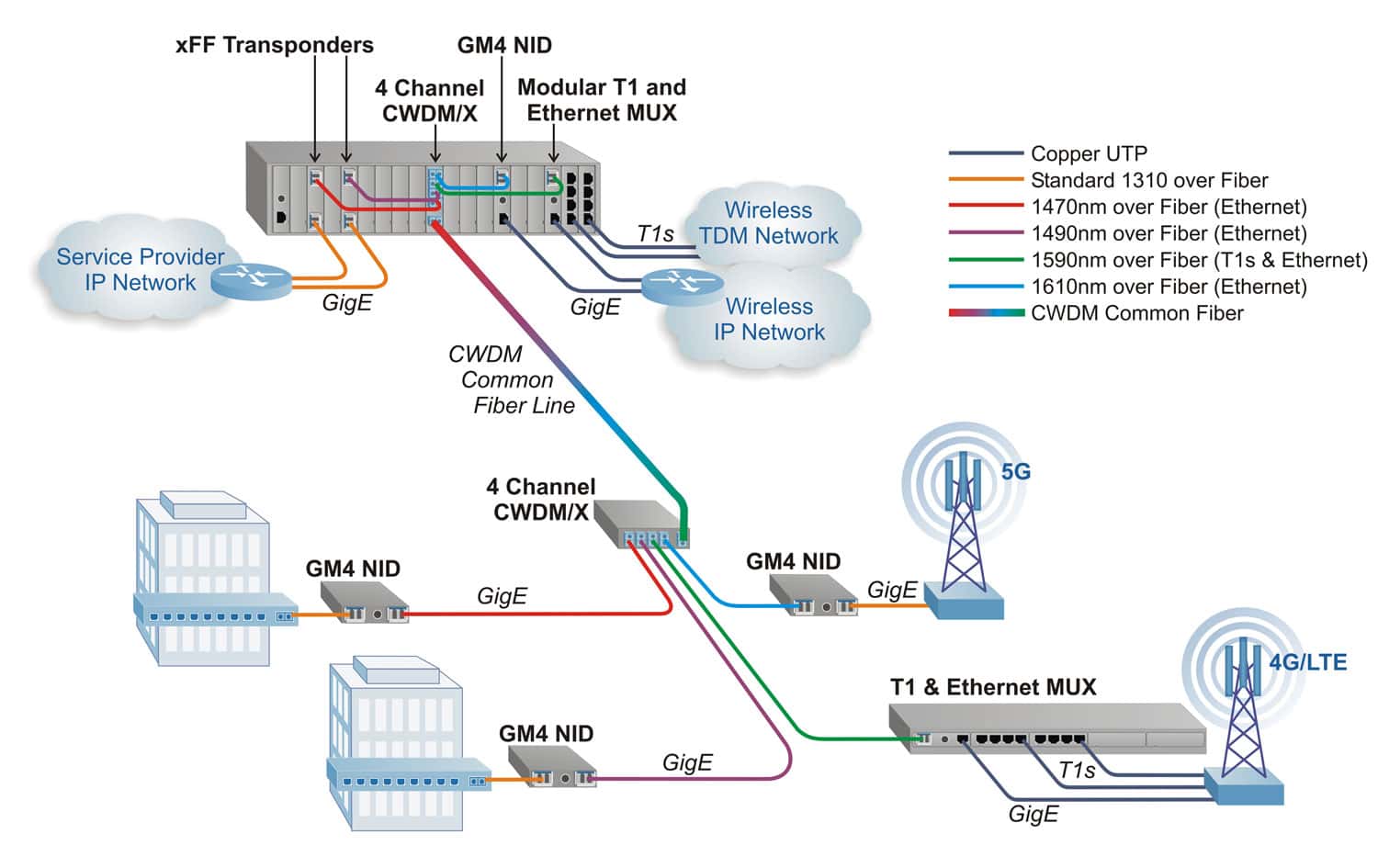Expand Fiber Capacity with CWDM Multiplexers
iConverter CWDM Multiplexers expand the capacity of existing fiber links by multiplexing up to 16 data channels of up to 10G each. Adding new wavelengths to mobile backhaul, SONET, metro and fiber access networks enables the delivery of new revenue-generating services without the cost of installing new fiber.
iConverter CWDM Multiplexers are designed to be integrated with other iConverter media converters and transponders to provide a true multi-service platform capable of delivering Ethernet, TDM, SONET and other services across a CWDM common link.
- Scalable to 8 or 16 channels using an optional Expansion Port
- Enables existing 1310nm networks to carry up to 8 additional channels
- Protocol and rate transparent for applications up to 10Gbps
- High port density with up to 120 ports in a 2U chassis
- Hardened Telecom enclosure operating temperature range of -40 to 75º C
- Passive device that can be installed in a powered chassis for managed applications
- Minimal and uniform optical loss facilitates easy network planning
- Seamless integration with iConverter NIDs and T1/E1 Multiplexers using Omnitron’s CWDM pluggable transceivers
iConverter Multi-Service Platform CWDM Application
The following diagram illustrates how the modular iConverter Multi-Service Platform enables a CWDM point-to-point access network incorporating four different services multiplexed over one fiber link.
Two iConverter xFF fiber-to-fiber transponders, a GM4 Network Interface Device and a Modular T1 and Ethernet Multiplexer are installed in a high-density 19-module chassis. These modules are connected with fiber patch cables to a 4-channel CWDM/X MUX that multiplexes all four channels (wavelengths) over the common fiber link.
On the left side of the illustration, the two xFF transponders convert standard 1310 wavelengths to CWDM wavelengths with CWDM Small Form Pluggable Transceivers (SFP). Fiber patch cables (color coordinated in the illustration for each CWDM wavelength) connect to the appropriate channel ports on the CWDM/X MUX. Carrier Ethernet Virtual Connections (EVCs) are transported over the 1470nm and 1490nm channels and multiplexed over the common fiber line. At the other end of the CWDM common line, another CWDM/X MUX demultiplexes the channels, which are transported over fiber to customer locations. A GM4 NID at each customer location provides Carrier Ethernet service demarcation with fault management and performance monitoring.

On the top right side of the illustration, copper UTP transports T1 circuits from a Wireless Carrier’s TDM network, and Gigabit EVCs from a Wireless IP Network. One of the EVCs is connected to the Modular T1 and Ethernet MUX that is digitally multiplexing the T1s and Ethernet onto one fiber cable with a 1590nm channel (for a 4G/LTE backhaul service).
The other EVC is connected to a GM4 NID module that is converting the copper link to fiber with a 1610nm channel (a 5G backhaul service). At the other end of the CWDM common fiber line, a CWDM/X MUX de-multiplexes the channels, which are transported over fiber to cell towers. A standalone GM4 NID provides Carrier Ethernet demarcation with performance monitoring and 1588 timing synchronization for the 5G service. A fixed-configuration T1 and Ethernet MUX provides Carrier Ethernet demarcation and T1 circuits for the 4G/LTE backhaul service.
This application illustrates that data from virtually any type of communications equipment can be carried over a CWDM network with the iConverter Multi-Service Platform.












